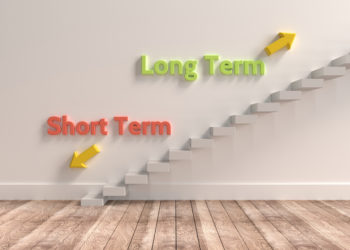As our community considers the possibility and promise of a new year ahead, and reflects on the raucous 2019 just gone by, many of us are taking stock of assets and updating roadmaps to prepare for 2020 opportunities. We are juggling heavy demand on digital and platform strategies, where priorities can be unclear in the face of changing research practices and disrupted access models. When it comes to ensuring content discovery and reader engagement, we are weighing the relative value of investing in blockchain or artificial intelligence, participating in GetFTR, working with ResearchGate, or something else entirely.
In the face of these trying decisions, when it comes to publishing technologies in 2020, I would strongly urge a return to some fundamental facts. While the needs of specific disciplines and communities will vary across content and technology providers, there are some essential principles we cannot avoid. As new whizzy technologies come and go, getting back to basics is a reminder that we are all about service to scholars and learners, a reminder that the “killer app” is high-quality content, composed in accordance with established standards for discoverability and accessibility.

In my work with publishers and suppliers, product development strategies must strike a balance between addressing current-day demands and securing long-term prosperity, and we are easily muddled in fear and loathing of an uncertain future. It’s not unlike other infrastructural decisions — do we modernize with splashy first-to-market transformations, or tend to the foundation of our enterprise? Can we maintain current engines while reinventing the wheel? Can we anticipate the needs of researchers and libraries of the future, while also meeting immediate stakeholder expectations?
At these crossroads, we are at risk of neglecting the primary needs of our readers and authors, or abandoning the existing services that have become necessary components of the research lifecycle. I believe there is often too much effort and money spent on the latest innovation, where there is still much to be done to fully realize the potential of those progressive investments in digital scholarship we’ve made in the recent past. Looking out for the next big thing is a worthy and necessary part of doing business today — however, getting back to basics ensures we can be agile in the face of constant change, while staying true to our core values and missions. Here are a few essential principles worth revisiting at the start of this new year.
First, let’s not forget why most of us are part of this community of scholarly publishers and service providers: To facilitate learning and research, to support the dissemination and generation of knowledge. When in doubt, this is the north star that I believe will maintain both current products and services, as well as guide priorities for future developments. I would argue that many decisions surrounding digital enhancements are geared toward economic or strategic dominance. In these cases, we have succumbed to competitive distractions and forgotten the essential purpose of serving researchers and scholars. While numerous studies track important changes in academic information behaviors, such as modes of information seeking, sharing, and management, core research practices have remained stable over the generations. Just like you, dear reader, our customers and end users may also find themselves distracted by the latest flashy technology. When you look past the hype, however, they ultimately have some basic tasks to complete and they simply want things to work — search engines to index, links to resolve, full-text to load.
At the end of the day, today’s readers and authors have persistent expectations for high-quality, accessible content produced via trustworthy processes. In my R&D work with researchers and students across various fields of study, brand loyalty is bestowed upon those providers who simplify the investigatory or instructional work at hand. The “killer app” is not an app at all — it is the remarkably less exciting offerings of authenticity, consistency, and accuracy. Despite the revolutionary technologies in which we all live and work these days, the reality of scholarly progress still requires age-old hard work and diligence, carefully reviewing and considering prior works, applying thoughtfully crafted research methods, and stitching together new insights that lead to ongoing academic progress.
In many cases, for publishers and service providers, what it takes to effectively support today’s scientists and scholars is not terribly complicated. Very often, we do not need to cut workflows and publishing routines from whole cloth, there are numerous guidelines and standards readily available. In particular, when it comes to producing high-value metadata for content discovery and access, leveraging information standards and contributing to their ongoing maintenance should be our golden rule. Ratified industry best practices should be our Big Ben of content architecture. Standards, such as the Journal Article Tag Suite (or JATS, for full-text journal articles) and KBART (for title-level indexing in library systems), to name a few, are well established and have become woven into the fabric of our pipelines, they constitute our terms of engagement.
Ensuring content accessibility sits somewhat at the intersection of delivering a positive reader experiences and compliance with relevant publishing standards, among other benefits to publishers and providers alike. Accessible sites are the most readable, interoperable, and user friendly to all visitors, regardless of physical or cognitive capabilities. Plainly put, accessibility is no longer a marginal nice-to-have. With the technological advancements at our disposal, and the clarity of digital publishing standards, accessibility conformance is one thing all providers should be doing as a matter of course. The basic principles of the Web Content Accessibility Guidelines (WCAG) are now integrated with other digital content standards, such as those that impact discoverability via mainstream search engines, like Google. Frankly, some publishers and suppliers are exposing themselves to both legal and commercial risks by neglecting content and/or platform accessibility compliance.
While the above are clearly fundamental to our scholarly ecosystem, I do not mean to imply that these fundamental activities are easy or can be achieved without mindful effort. These essential things require diligence and investment, as I believe we cannot build a successful publishing program unless our foundation is solid. We must always keep a vigilant eye on shifting priorities and practices within the context of those academic and scientific networks we serve. However, kicking off the new year with a return to these basic facts ensures today’s policies and products are grounded by information standards and rooted in the needs of our users and customers.
We cannot expect to achieve these fundamentals alone, in fact these essentials are made possible by cross-sector collaboration and partnerships. A return to basics reminds us that rising tides lift all boats and each one of us is responsible for shoring up all fleets. Remembering these foundations calls for us to team up and contribute and be a force for progress and positive change in our community, so that we are all prepared to survive and thrive in the new year together.
Discussion
2 Thoughts on "Back to Basics: When in Doubt, Get Fundamental"
Regarding “leveraging information standards and contributing to their ongoing maintenance should be our golden rule. …Standards, such as the Journal Article Tag Suite (or JATS, for full-text journal articles) are well established and have become woven into the fabric of our pipelines, they constitute our terms of engagement.”
The spread of JATS usage by scholarly publisher in the last 5 years is extraordinary compared to the previous decade of NLM xml for journal articles. Anyone who is interested in keeping abreast should consider attending the JATS-CON 2020 (https://jats.nlm.nih.gov/jats-con/upcoming.html).
“a reminder that the “killer app” is high-quality content”
….. only true (in an economic sense) if there is a vehicle to monetize and support the creation of high-quality content.
Richard Wynne
Rescognito



